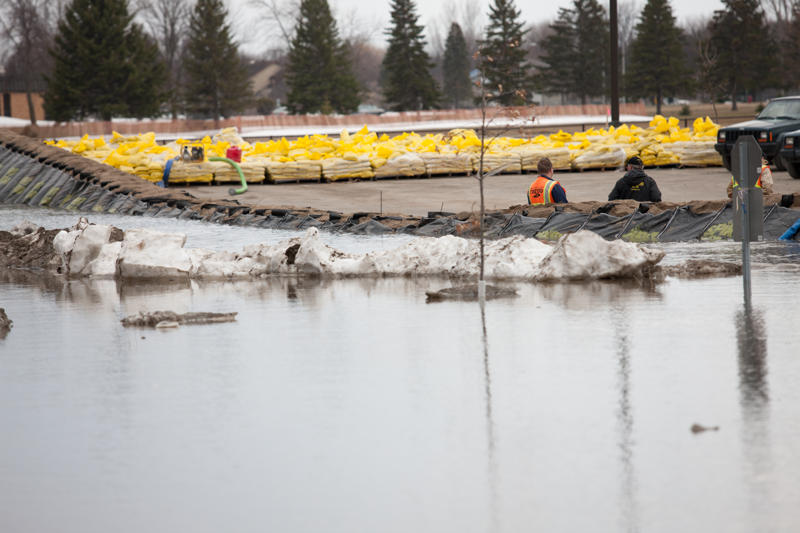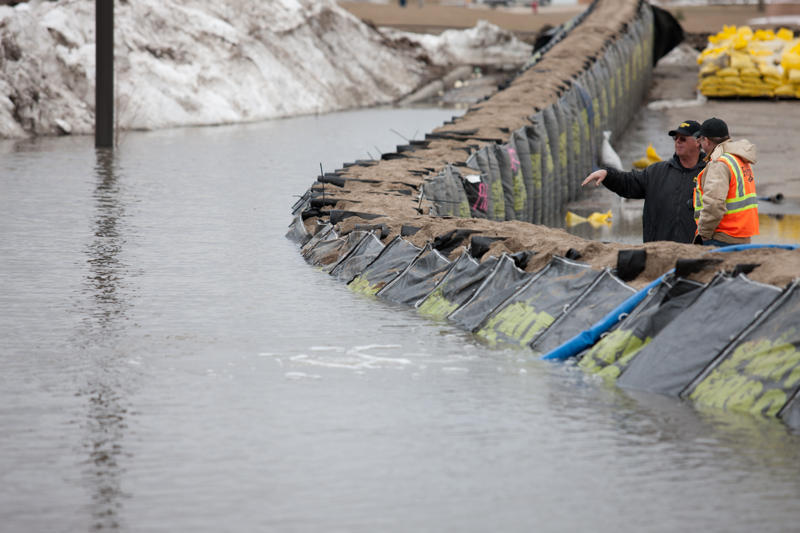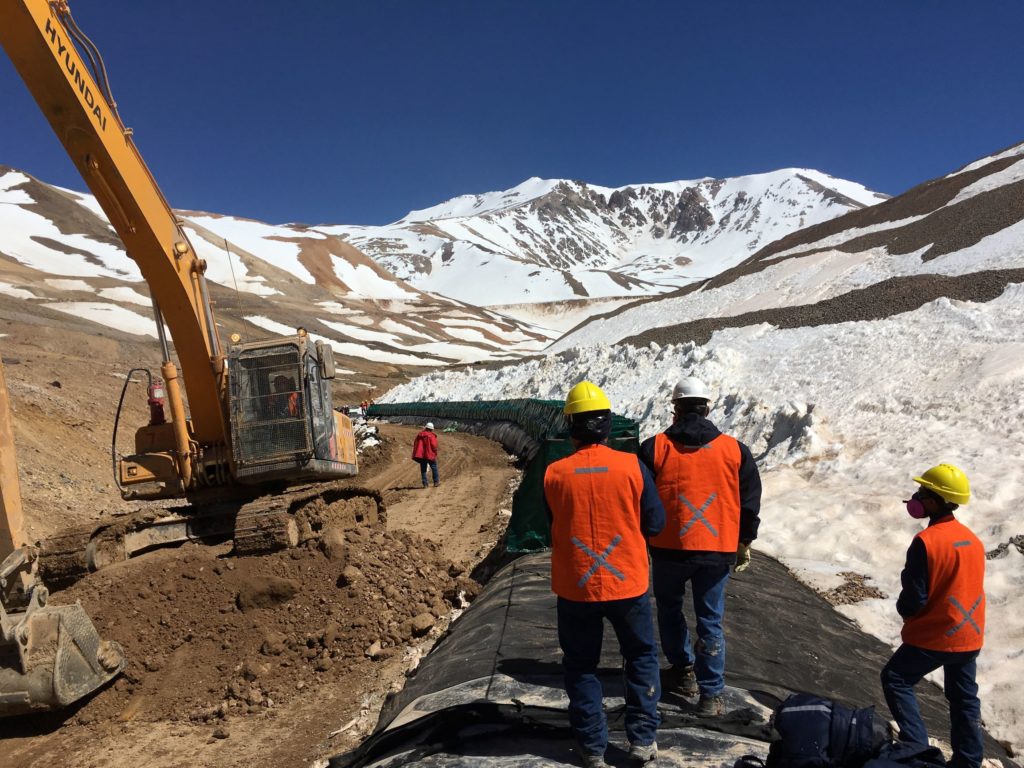Flood Control: Flood Bags vs. TrapBag® vs. Bulk Bags
When a flood is approaching, there are a few types of bags to consider; TrapBags are the best, due to their rapid-deployment, durability, and dependability.

Flood Control Options
Flooding causes billions of dollars in damages in the U.S. With 25% of critical infrastructure at risk for floods, durable and dependable protection is needed to minimize public, commercial, and residential property damage.
While there are various types of bags that can help with flood control by containing or diverting floods, TrapBag® barriers are the superior choice, as they are simple and quick to deploy, made of extremely strong textiles to prevent leakage, and engineered to withstand heavy floods, even if one cell is compromised.
Flood Bags vs. Bulk Bags vs. TrapBag
What Are Flood Bags?
Flood bags are water-activated bags used to absorb liquid. Due to their interior composition, they do not require fill materials. Due to being individual bags, they are more susceptible to separating in the event of an extreme flood.
What Are Bulk Bags?
Bulk bags, also known as flexible intermediate bulk containers (FIBC), are fillable vessels used by many industries for transporting and storing a variety of dry, flowable materials. The many terms for a bulk bag include:
- Bulk bag
- Bulk tote
- Big bag
- Super bag
- Bulk sack
What Is TrapBag?
TrapBags are fillable barrier bags with an interconnected accordion structure, making them both easy to rapidly deploy and also extremely effective at preventing leaks during a flood.
TrapBag: The Ultimate Flood Protection
TrapBag barriers are made of high-strength textile that delivers durability, dependability, and longevity. When not in use, they can be easily stored until the next event of deployment.
They are perfectly engineered for flood protection, as the accordion structure ensures the flood water will not break through a potential weak point. TrapBags are also safer than other alternatives, as the majority of the mass is concentrated in the bottom half of the barrier.
Advantages of TrapBag vs. Flood Bags
Bulk bags leave openings for water to flow through due to the imperfect nature of their stacking, and require additional materials like traditional sand bags and water-proof membranes. TrapBags are connected at the sides and extremely durable, preventing any damaging water seepage.
Flood bags are water activated, meaning by the time a flood has reached the area, they still require time to deploy and begin working. TrapBags are filled on-site prior to a flood beginning, so they are operating successfully whenever they are required.
Standard flood bags are only 2 ft tall, requiring more for stacking if water levels continue to rise. TrapBags are double the height. For reference, a single 100 ft section of TrapBags replaces around 8,000 sandbags.
Why You Shouldn’t Use Bulk Bags for Flood Control
Bulk bags should not be used for flood control. They are typically used for transporting large amounts of fill for various industries; in a bulk bag, you might find flour, sand, cattle feed, plastic, peanuts, minerals, or pharmaceutical drugs.
Due to their huge individual size, bulk bags require a skid loader and operator to place, as well as relying on a water-tight membrane to be successful at controlling flood waters. TrapBags are optimal for flood control, as they are much less complicated and much faster to set up than bulk bags.
Industries Switching to TrapBag
Many industries are making the switch from bulk bags to TrapBag for flood prevention needs.
Agricultural Uses for TrapBag
Whether you’re near an overflowing river, thrashing ocean, or experiencing an inland flood, extreme amounts of water can be devastating in an agricultural environment, destroying the soil, drowning the crops, and depositing harmful, hard-to-clear debris.
TrapBag barriers can be used to divert flooding away from farmland, saving farmers from losing time and money during a precious period of growing or harvesting. A levee or dike constructed of TrapBags gives peace of mind before and during flood events.
Using TrapBags for Construction
When undergoing commercial or residential construction, sticking to a timeline and budget is incredibly important. Improper flood protection can upend any regimented plans, as large amounts of water delay construction by preventing a dry work surface, or by causing expensive, time-sucking damages. As standard construction bulk bags are not watertight, TrapBags are the way to go.
TrapBags can be used during the construction process to help with flood prevention by diverting water to take a safer, less damaging route, ensuring the project stays on track even after an unexpected bout of bad weather.
TrapBag for Disaster Relief
In times of extreme inclement weather, from a tsunami, hurricane, or mudslide, TrapBags can be used for disaster relief instead of FIBC bulk bags. TrapBags provide a steady barrier in instances of flooding or levee breaches, saving surrounding property and people from submersion.
Other Uses for TrapBag
Erosion Control
The effects of natural disasters, including flooding and strong winds, and the general presence of people, means erosion of land is always happening. Erosion control is important to preserving the world around us, and when it comes to dependable protection, TrapBags are a clear choice.
The erosion of environmentally-important natural features like sand dunes, riverbanks, and steep slopes is greatly minimized when TrapBags are in place. As they are able to be filled with sand, washed gravel, or concrete, when used as erosion control bags, TrapBags can function as both temporary and permanent barriers to corroding earth.
Stormwater Containment
Polluted stormwater poses a threat to the surrounding ecosystems. On certain job sites with potential pollutants and debris, like in construction, it is the responsibility of the crew to enact proper stormwater containment facilities. TrapBags can be used to create a designated basin for the stormwater to run into, keeping the nearby land and water sources safe.
Spill Control
If you’re in an environment working with large amounts of chemicals or oils and experience a spill, you are required by law to deal with the spill in a quick, effective manner. TrapBags are a great temporary solution to time-sensitive spill control scenarios, maintaining durability while a clean up operation is organized.
Protect Your Property from Flooding with TrapBag
Preparing for a future flood? Take some of the stress away and order your TrapBags today. If you have a few questions first, send us a message; we look forward to providing not only a sense of security, but actual protection, with our TrapBag barriers.


